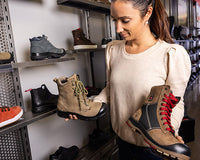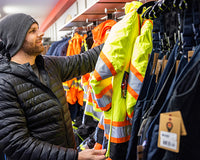In 2019, NSSWC counted more than 10,000 cases opened due to finger and hand injuries. A significant amount of the reported injuries and lesions are due to cuts and punctures. Many of these injuries could have been avoided completely or reduced with the use of proper gloves or additional protection.
It is proven that a workplace injury can cost a company up to 4 times an employee's salary. Several factors, including lost productivity, replacement costs and the cost of the accident add up to the company's bill. In order to reduce the cost of injuries and to make the workplace safer, employers are increasingly providing cut-resistant gloves to their employees.
What does a glove need to have to be considered cut resistant?
Two safety standards are used to classify the cut resistance of gloves. The European standard EN388 and the American standard ANSI 105-2016 determine the level of cut resistance of gloves.
To meet the standards, gloves must undergo supervised laboratory testing. In fact, in a video course, Showa explains very well the tests to which the gloves are subjected.
The European standard (EN388) has 6 different levels of cut resistance ranging from A to F. The American standard (ANSI) has 9 different levels of cut resistance ranging from A1 to A9.
A pair of gloves at level A will offer less protection than a glove at level F. A glove at A1 will offer less protection than a pair of gloves at A9.
Mild cut hazards are covered by ANSI A1 to A3 and EN388 A to C. Medium cut risks are covered by the ANSI A4 and A5 standards and by the EN388 D and E standards. Finally, high risk cuts are covered by ANSI standards A6 to A9 and by EN388 F.
Which model to choose?
Cut resistant gloves are suggested for many types of handling, including storage, mechanical, electrical, assembly, metal, etc. Cut resistant protection is present on some knitted and coated gloves as well as on some rubber gloves.
Whenever there is a risk of injury or cuts, it is recommended to wear adapted gloves. When handling objects with sharp edges, it is recommended to wear a cut-resistant glove.
Each of the two standards offers adequate protection. However, it is important to choose the right glove for the job. Don't wait until an accident occurs to purchase cut-resistant gloves.
If in doubt, don't hesitate to visit one of our 7 stores to talk to our experts!



